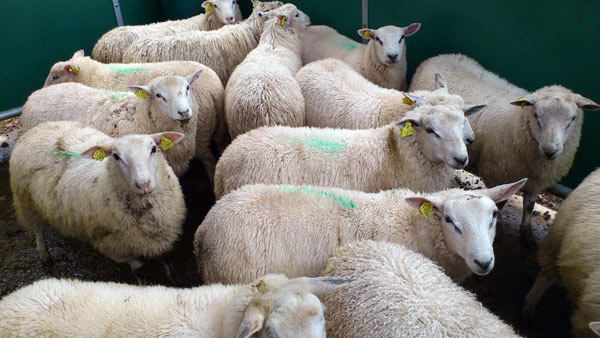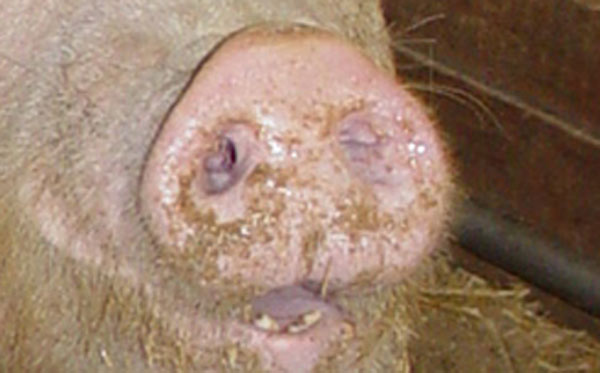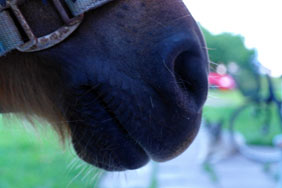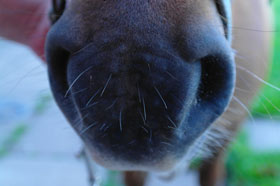Feeling
The sensory cells for heat and cold play an important role for the animal’s temperature regulation, while the sensory cells for pain give the animals possibility to relieve and protect injuried body parts. You can read more about this in the paragraphs Temperature regulation and Pain.
Touch and pressure are part of the animals’ communication, from friendly lickings and trimmings to buttings and bites. The animals are subjected to touch and pressure at countless occasions during the stay at the slaughterhouse. How much depends on i.e. driving routines, leirage system, and stocking density.
How much they are subjected to touch and pressure and how they react is dependant on how used the animals are to similar systems at the farm. I.e. can animals that are not used to being driven walk into each other, push and butt or be driven hard, which causes stress and even An unpleasant physical and emotional experience, that often but not always is associated with tissue wounds. pain.
Animals that have been raised free-ranging experience stress when they are forced together tightly in smaller overnight boxes (equine and bovine animals) or transport containers (poultry). Fur animals are also subjected to touch and pressure at killing, even if it happens to a much lesser degree than for animals that have been tranported to the slaughterhouse.
Equine and bovine animals
When you are handling an animal, it is important to do it in a friendly and firm way. Stroking the animal in a firm manner kan make it calmer. Patting the animal can sometimes be misinterpreted as beating.
The more human physical contact can be avoided at driving, the better for the animals. When it cannot be avoided, it is important that driving disks and paddles are used correctly. Cattle prods cause pain and should only be used exceptionally, when no other methods work. Photo: Bo Algers, SLU.
Feeling is detected in different parts of the body. The skin is the part of the body that has the most direct contact with the animal’s surroundings. There are five types of sensory cells for feeling in the skin that react independantly on various exterior stimuli: touch, pressure, heat, cold, and pain.
From the sensory cells, nerve signals are lead to the brain via the spinal cord. It is not until the signal is detected by the brain that the animals feel anything. If the stimulus is connected to acute danger for the body, i.e. a cut wound or excessive temperature, the nerve signal is reconnected already in the spinal cord and the animal retracts the affected body part before it has felt anything.
(Compare to when we retract the hand from a hot stove plate.)

Herd animals feel secure when they feel the presence of other animals. That makes the individual less vulnerable to external threats. Photo: Sofia Eriksson.


Pigs use the snout to root for food. The upper part of the snout is strong and robust, while the lower part is soft, has sensory hairs and is very sensitive to touch and pressure.
Photo: Anne Larsen, SLU.

Horses have very sensitive skin and upper lip. They also have sensory hairs at the muzzle, which are important for exploring the close surroundings.
Photo: Kristina Johansson.